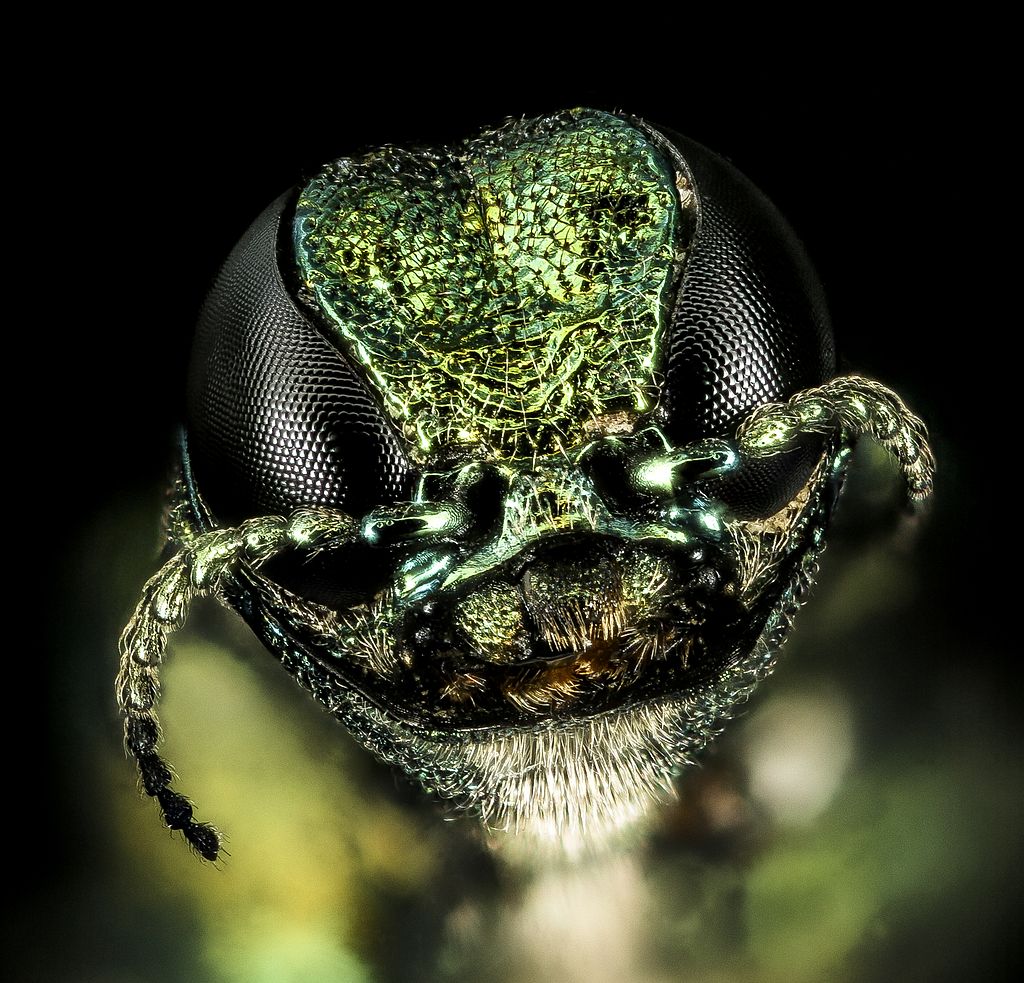The silent devastation sweeping through America’s forests has a deceptively beautiful face. Gleaming with a metallic green sheen, the emerald ash borer (EAB) appears harmless at first glance, but this invasive beetle has become one of the most destructive forest pests in North American history. Since its accidental introduction in the early 2000s, this tiny insect has killed hundreds of millions of ash trees across the United States, fundamentally altering ecosystems, devastating urban tree canopies, and causing billions in economic damage. What makes this beetle so lethal to ash trees, and why have containment efforts proven so challenging? The story of the emerald ash borer represents a cautionary tale about global trade, invasive species management, and the fragility of our forest ecosystems in an interconnected world.
Origins and Invasion: The Beetle’s Journey to America
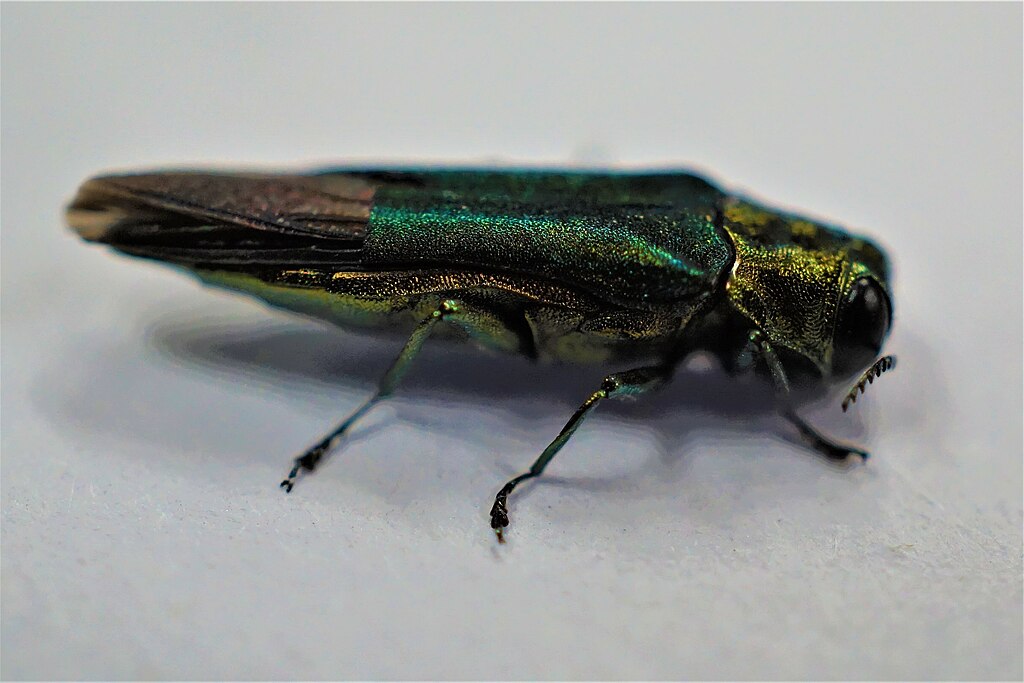
The emerald ash borer (Agrilus planipennis) is native to northeastern Asia, including parts of China, Korea, Japan, and eastern Russia, where it typically exists in balance with resistant native ash species. Scientists believe the beetle first arrived in North America hidden in wooden shipping materials from China, likely in the late 1990s, though it wasn’t discovered until 2002 in southeastern Michigan and Windsor, Ontario. By the time experts identified the invasive pest, it had already established a significant foothold, making containment nearly impossible. Genetic analysis of North American EAB populations confirms they originated from a single introduction from China, demonstrating how just one undetected invasion event can lead to catastrophic consequences. The beetle’s arrival represents a classic case of accidental introduction through global trade, highlighting the unintended ecological consequences of our interconnected world economy.
The Perfect Storm: Why Ash Trees Are Vulnerable
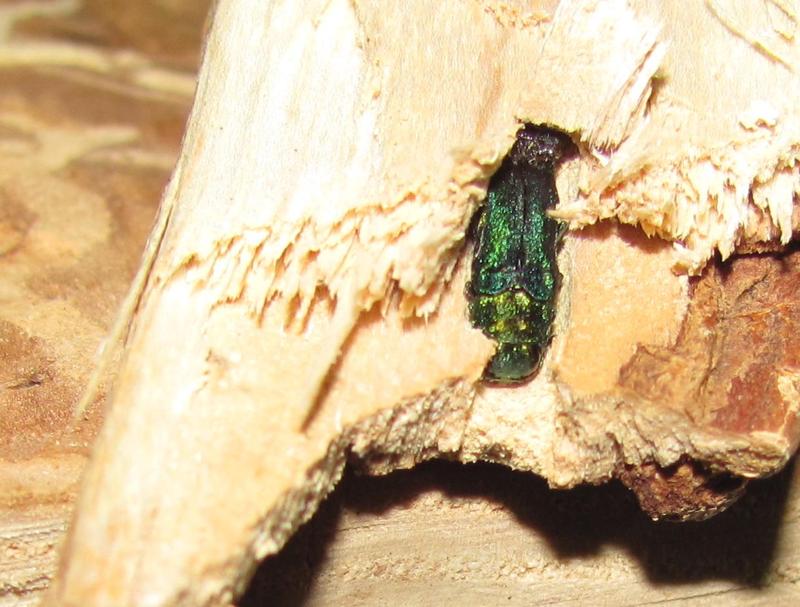
North American ash species evolved without exposure to the emerald ash borer, leaving them with essentially no natural defenses against this novel predator. Unlike their Asian counterparts, which co-evolved with the beetle and developed chemical and physical defenses, American ash trees lack the protective mechanisms to resist or survive an infestation. All 16 native North American ash species are susceptible, including white ash, green ash, black ash, and blue ash, though blue ash shows slightly higher resistance. This vulnerability is compounded by the widespread planting of ash trees in urban and suburban landscapes across America, where they were favored for their hardiness, attractive form, and adaptability to various soil conditions. Many cities had specifically increased ash plantings to replace American elms lost to Dutch elm disease, inadvertently setting the stage for another tree epidemic decades later.
The Beetle’s Life Cycle: How EAB Kills
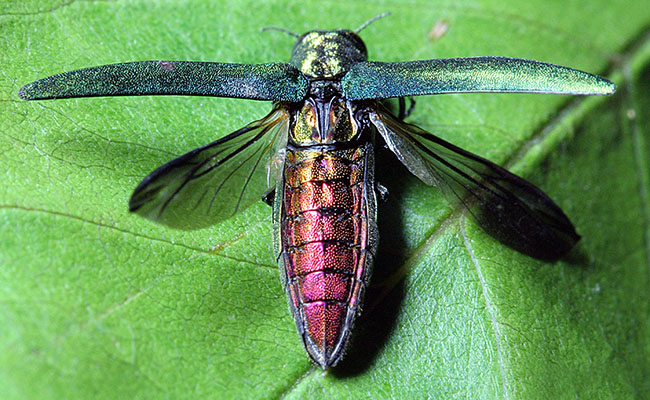
The emerald ash borer’s deadly efficiency stems from its reproductive strategy and feeding behavior that directly targets the tree’s vascular system. Adult beetles emerge from infested trees in late spring, feeding on ash foliage but causing minimal damage at this stage. After mating, females deposit eggs in bark crevices, and upon hatching, the larvae bore through the bark into the phloem and cambium layers – the tree’s critical nutrient transport tissues. The cream-colored larvae create distinctive S-shaped feeding galleries as they tunnel through these layers, effectively girdling the tree and preventing the flow of water and nutrients between roots and canopy. A single tree can host hundreds or thousands of larvae, whose cumulative damage blocks nutrient transport so completely that even healthy trees typically die within 2-4 years of initial infestation. The larvae overwinter under the bark, pupate in spring, and emerge as adults to continue the cycle, with each female potentially laying 60-90 eggs in her lifetime.
Signs of Infestation: Recognizing EAB Damage
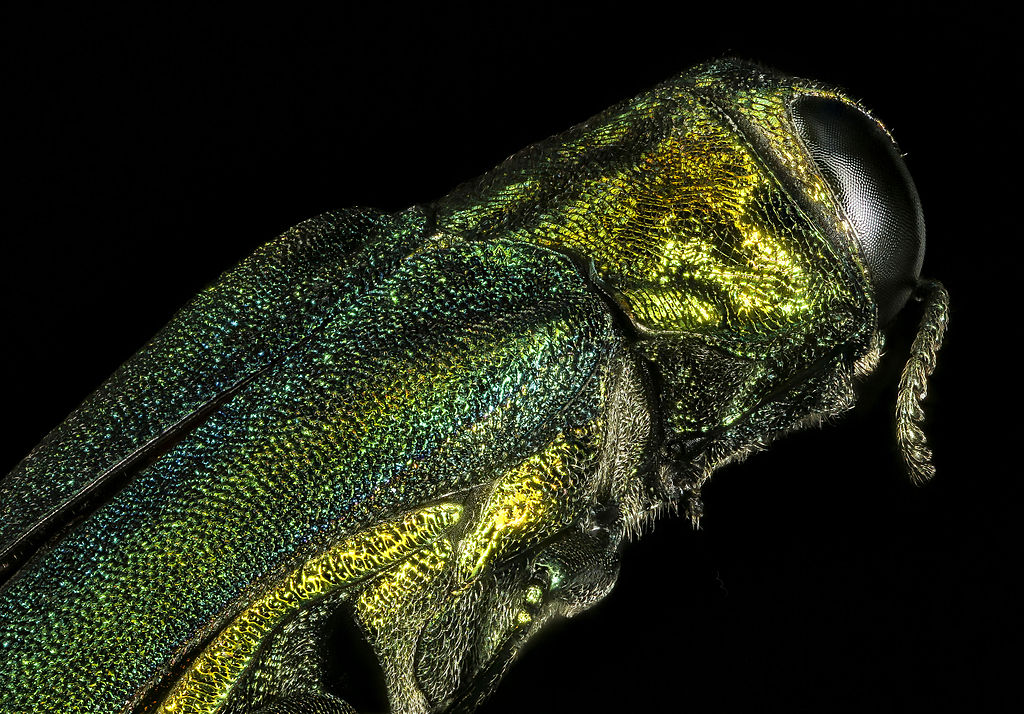
Detecting emerald ash borer infestations early presents significant challenges, as much of the damage occurs beneath the bark before external symptoms become apparent. The earliest visible signs often include D-shaped exit holes (approximately 1/8 inch wide) where adult beetles have emerged from the trunk, distinctive of this particular borer species. As infestations progress, trees develop vertical splits in the bark, revealing the S-shaped larval galleries underneath that weave through the inner bark and outer sapwood. Crown dieback typically begins at the top of the tree, with progressive thinning of foliage as the infestation spreads downward over subsequent years. Another telltale sign is unusual woodpecker activity, as these birds strip away outer bark in search of the nutritious larvae, creating light-colored patches on the trunk known as “blonding.” Epicormic sprouting – the growth of small branches along the trunk or major branches – often occurs as the tree attempts to compensate for canopy loss, representing a last-ditch survival effort before eventual death.
Rapid Spread: How EAB Moves Across America
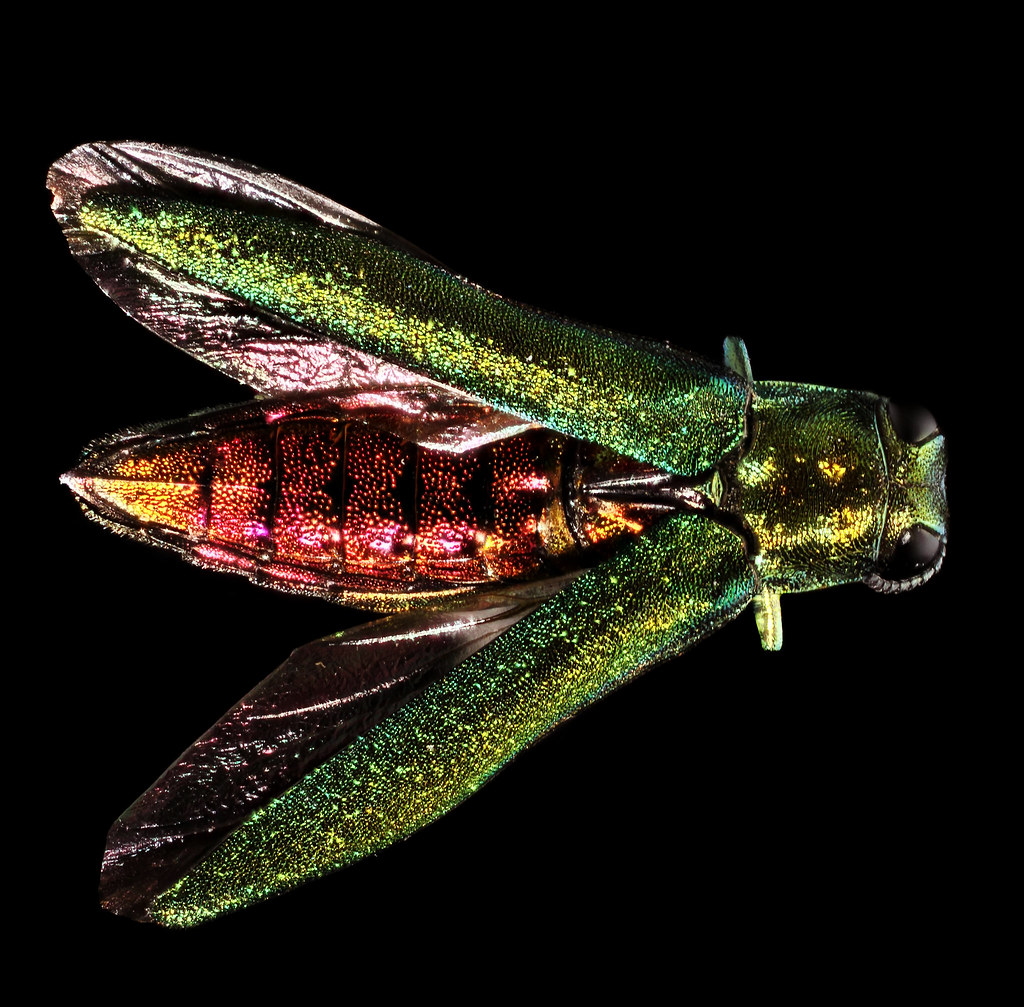
The emerald ash borer’s conquest of North America has occurred with alarming speed, enabled by both natural dispersal and human-assisted movement. Adult beetles can fly up to half a mile to find new host trees, allowing for steady natural expansion of approximately 2-3 miles per year from infested areas. However, the beetle’s dramatic spread across the continent has been dramatically accelerated by human activities, particularly the transportation of infested firewood, nursery stock, and timber products across state and county lines. A single bundle of infested firewood transported to a campground can establish a new satellite population hundreds of miles from existing infestations, creating new epicenters for further spread. Since its discovery in 2002, EAB has now been confirmed in 36 states and five Canadian provinces, killing hundreds of millions of ash trees and continuing its relentless expansion. Quarantines and firewood movement restrictions have helped slow but not stop this spread, as enforcement remains challenging and public compliance inconsistent.
Ecological Impact: Forest Ecosystems in Peril
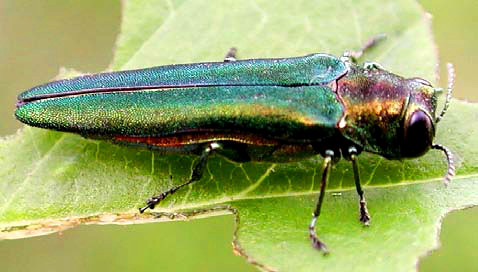
The mass die-off of ash trees is creating profound ripple effects throughout forest ecosystems, with consequences that will persist for generations. Ash species play keystone roles in many forest communities, particularly in wetlands and riparian areas where black ash often dominates. Their sudden removal from these systems leaves ecological voids that alter everything from understory plant communities to nutrient cycling. Research shows that ash mortality leads to increased soil temperatures, altered hydrology, and changes in nitrogen availability that favor invasive plant species like buckthorn and honeysuckle, potentially triggering fundamental ecosystem transformations. Nearly 100 arthropod species feed specifically on ash trees, including several butterfly and moth species that cannot complete their life cycles without ash foliage. The North American ash die-off represents one of the most significant changes to eastern forest composition since the chestnut blight in the early 20th century, with ecological impacts that researchers are still working to fully understand.
Economic Devastation: The Billion-Dollar Beetle
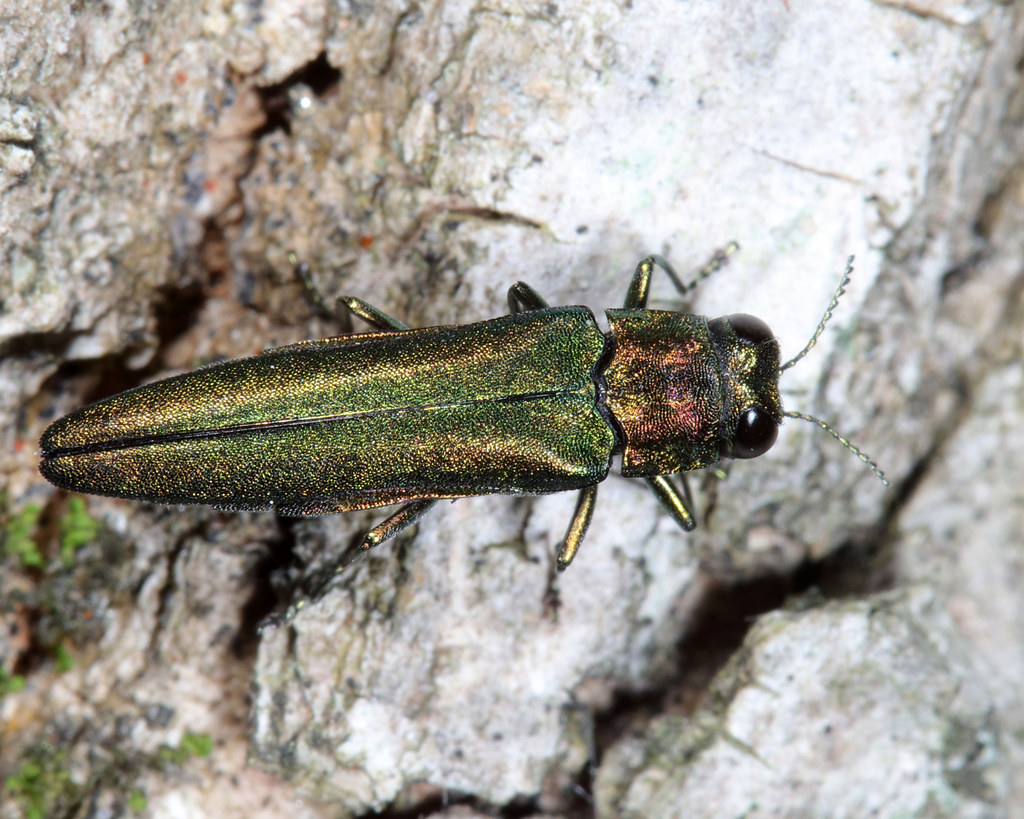
The financial toll of the emerald ash borer invasion extends far beyond the forestry sector, creating staggering costs for municipalities, property owners, and industries dependent on ash resources. Economic analyses estimate the beetle will cause approximately $12.7 billion in damage by 2020, including tree removal, replacement costs, and decreased property values in affected areas. For municipalities, the burden is particularly acute, as city governments must allocate funds to remove thousands of hazardous dead trees along streets, in parks, and on public lands – often at costs exceeding $1,000 per tree. The impact on Native American communities has been especially severe, as black ash holds immense cultural significance for basket-making traditions among many tribes in the Northeast and Upper Midwest. The wood products industry has also suffered substantial losses, as ash has been widely used for baseball bats, tool handles, furniture, flooring, and traditional electric guitar bodies – applications where few alternative woods offer the same combination of strength, flexibility, and workability.
Containment Efforts: The Battle to Slow the Spread
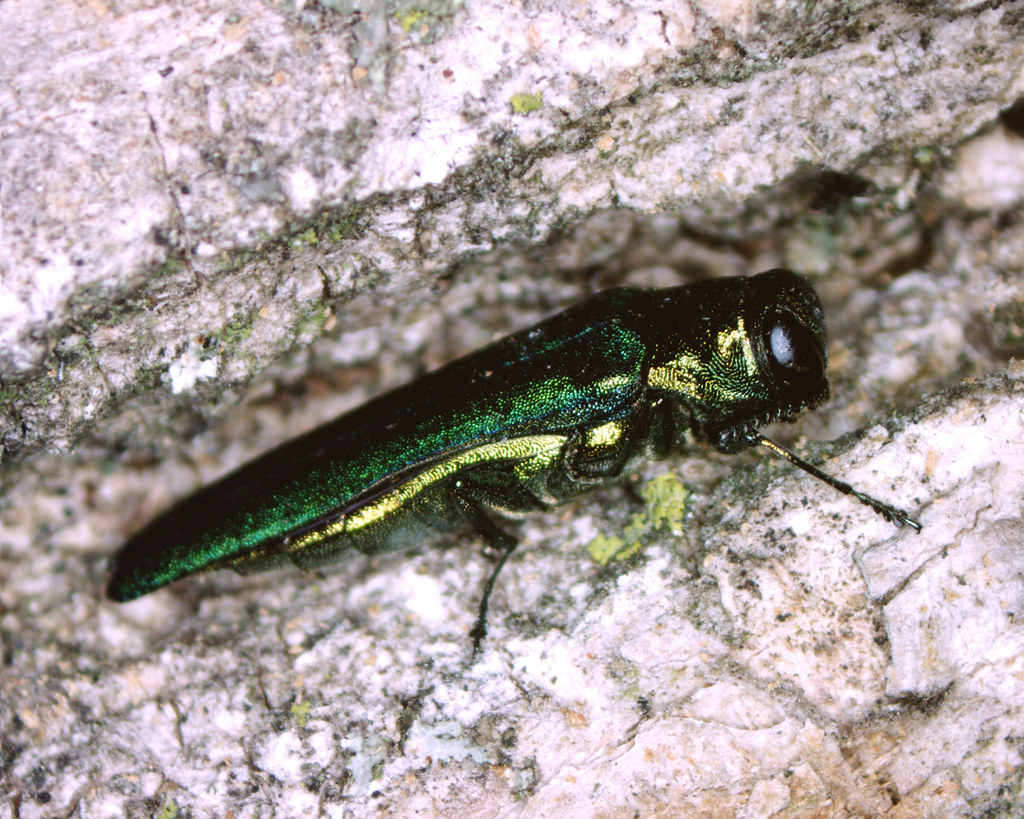
Federal and state agencies have implemented multi-faceted approaches to slow the emerald ash borer’s advance, though complete containment has proven elusive. Quarantine regulations prohibiting the movement of ash wood products and firewood from infested areas formed the cornerstone of early control efforts, supplemented by extensive public education campaigns with slogans like “Don’t Move Firewood.” Detection programs utilizing purple prism traps baited with chemical lures help monitor the beetle’s presence in new areas, while systematic removal of ash trees ahead of the infestation front creates “sink” areas that can slow the insect’s advance. In selected high-value areas, preventative trunk injections with systemic insecticides have proven effective at protecting individual trees, though the treatments must be repeated every 1-3 years and are not economically viable for forest-scale application. Early detection remains challenging, as trees typically show no external symptoms until they’ve been infested for at least a year, by which time the beetles have usually spread to neighboring trees.
Biological Control: Nature’s Answer to EAB
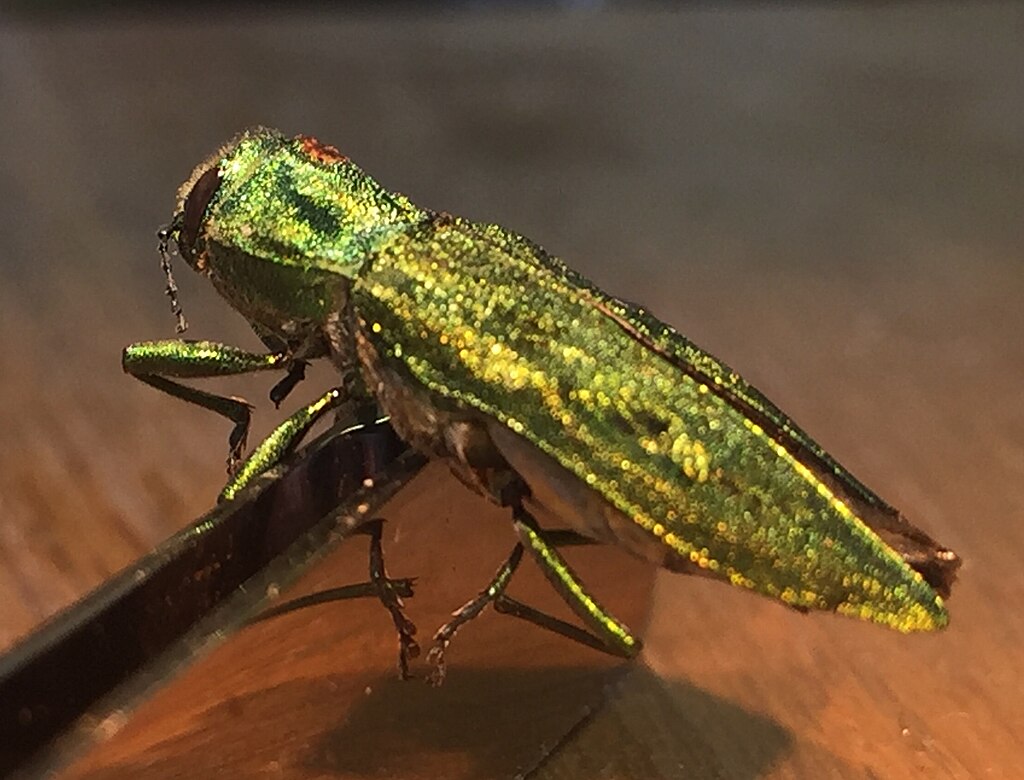
The most promising long-term management strategy involves biological control using the emerald ash borer’s natural enemies from its native Asian range. After extensive host-specificity testing, scientists have approved and released four species of parasitoid wasps that specifically target EAB eggs or larvae without threatening native insects. Oobius agrili attacks and lays its eggs inside EAB eggs, while Tetrastichus planipennisi, Spathius agrili, and Spathius galinae target different larval stages, with the female wasps using specialized ovipositors to lay eggs through the bark directly onto or near developing EAB larvae. Since the first releases in 2007, researchers have documented successful establishment of these biological control agents in multiple states, with evidence that they can reduce EAB populations by 20-80% in optimal conditions. While these natural enemies won’t save already-infested trees, they may eventually help regulate EAB populations to levels that allow for some ash regeneration and recovery, potentially stabilizing the ash resource over decades rather than years.
Genetic Resistance: Breeding the Next Generation of Ash
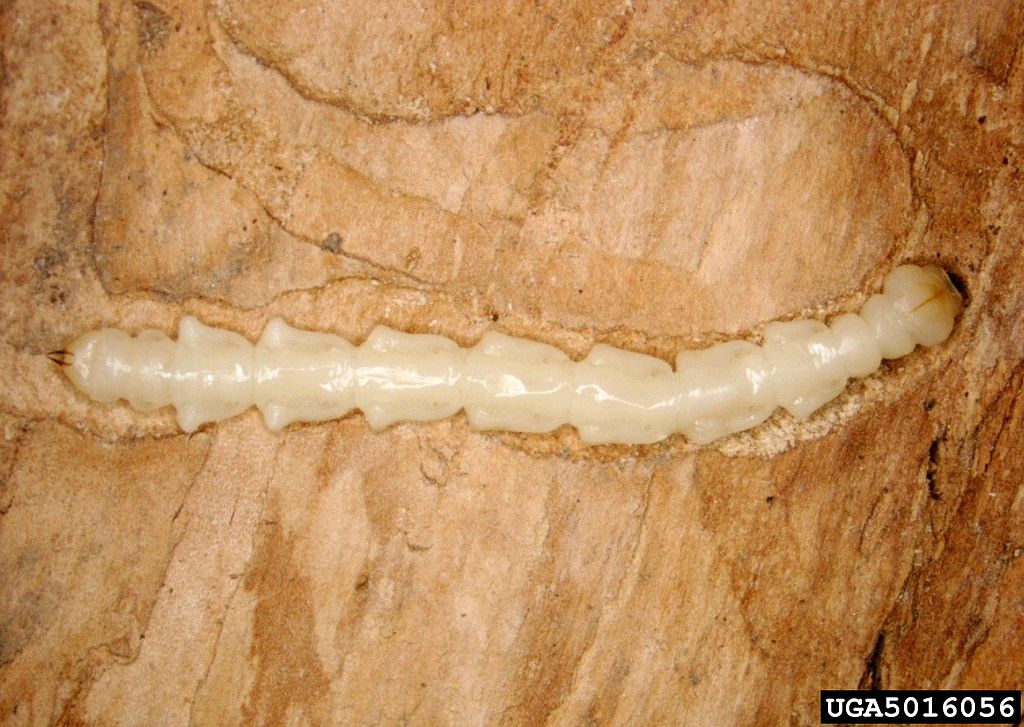
The search for genetic salvation for North American ash species centers on identifying and propagating trees with natural resistance to the emerald ash borer. Scientists with the USDA Forest Service have been conducting systematic surveys to locate “lingering ash” – trees that have survived in heavily infested areas where 99% of their neighbors have died, suggesting some inherent resistance mechanisms. These rare survivors are being crossed with Asian ash species that co-evolved with EAB to develop hybrid trees combining the form and ecological adaptations of North American species with the defense compounds of their Asian counterparts. Researchers are also exploring genetic engineering approaches that could potentially introduce specific resistance genes directly into native ash species. The “Lingering Ash Project” has already identified several promising candidates with mechanisms that appear to either deter adult feeding and egg-laying or impede larval development through chemical defenses. While breeding resistant ash varieties represents a multi-decade effort, it offers perhaps the best hope for eventually restoring ash to North American forests.
Urban Impacts: Reshaping America’s Communities
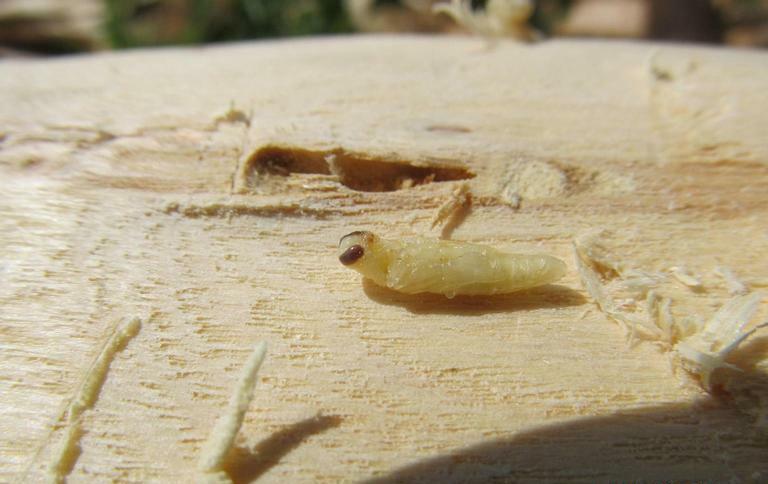
The emerald ash borer’s devastation has transformed streetscapes and neighborhoods across America, leaving gaps in once-shaded streets and significantly altering urban microclimates. In many Midwestern cities where ash comprised 20-40% of the urban forest, the rapid loss of mature canopy has increased summer temperatures, reduced air quality, and diminished aesthetic values that took decades to establish. Studies in affected communities have documented multiple social and health impacts associated with this tree loss, including increased respiratory illnesses, higher energy costs for cooling, and even correlations with elevated crime rates in neighborhoods that lost significant tree cover. The financial burden on homeowners can be substantial, with removal costs for a single large ash tree often exceeding $1,500, while the emotional toll of losing beloved landscape trees has affected community wellbeing in ways that are harder to quantify. Many municipalities have responded with aggressive replanting programs emphasizing species diversity to ensure that no future pest or disease can have such catastrophic impact on their urban forests.
Climate Connections: Warming Temperatures and EAB
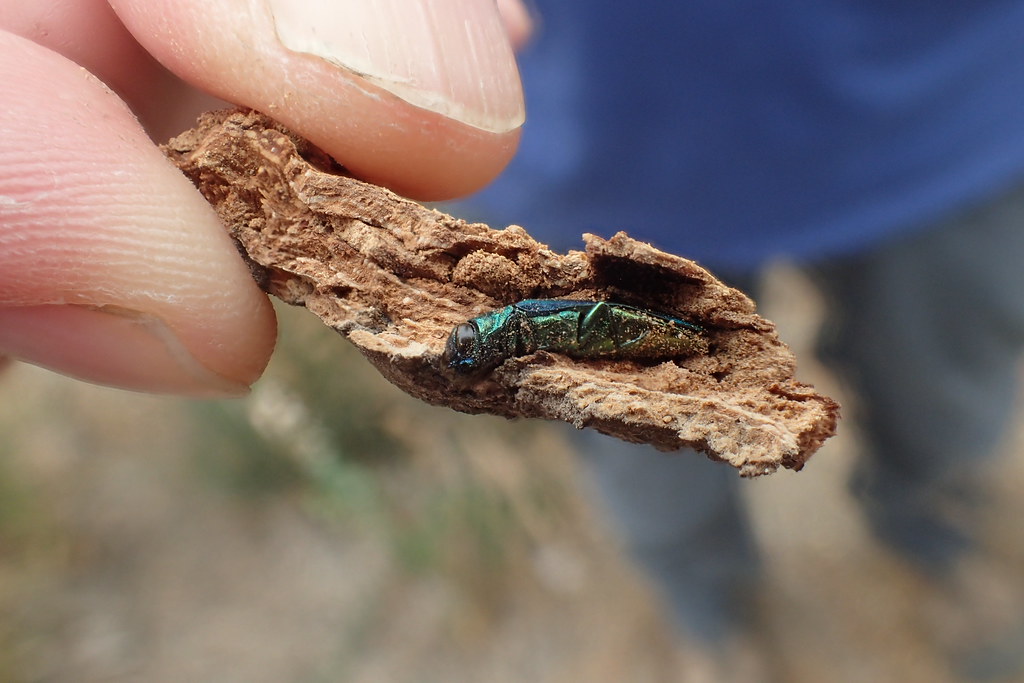
Climate change appears to be exacerbating the emerald ash borer crisis through multiple pathways that favor the beetle’s expansion and survival. Warming winter temperatures have expanded the beetle’s potential range northward into regions where extreme cold previously would have killed overwintering larvae, allowing EAB to threaten ash populations in areas once considered safe from invasion. Research indicates that higher temperatures also accelerate the beetle’s development rate and may enable completion of its life cycle in a single year rather than two in some regions, potentially doubling reproduction rates. Simultaneously, climate-related stresses including drought, heat waves, and altered precipitation patterns are weakening ash trees’ natural defenses and recovery capacity, making them more vulnerable to attack and less able to survive light infestations. Computer modeling suggests that the combination of climate change and EAB could eliminate ash from much of its native range by the end of the century if effective control measures aren’t developed, representing a climate-pest interaction with profound ecological consequences.
Looking Forward: The Future of America’s Ash Trees
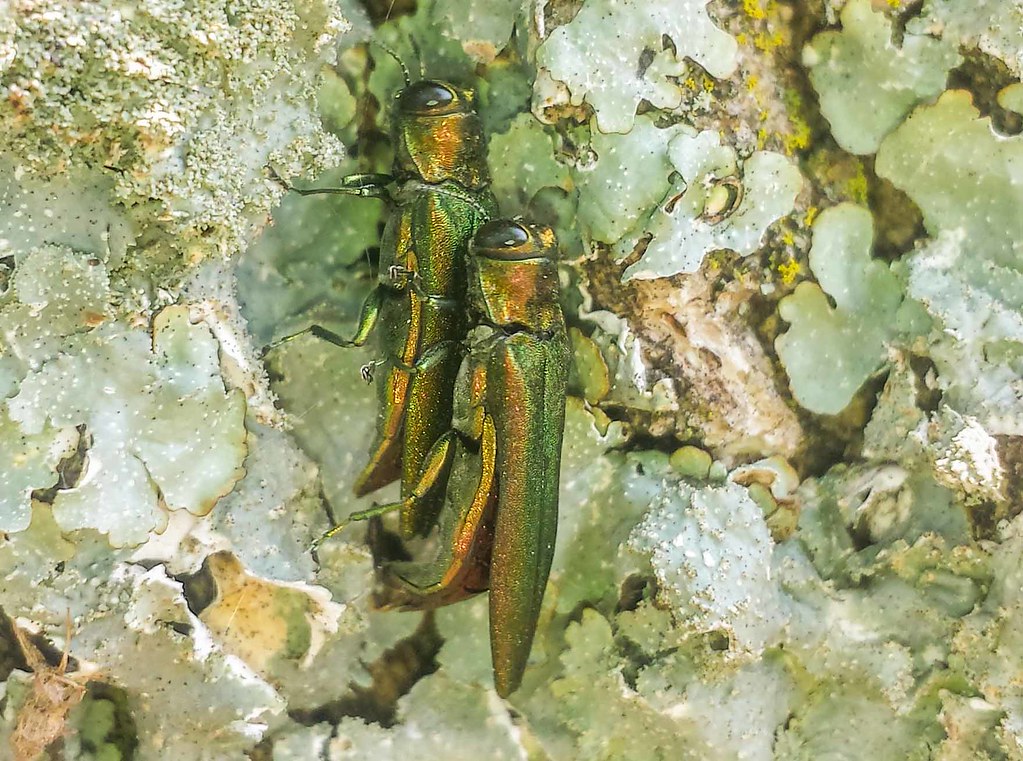
The outlook for North American ash species presents a complex picture of loss, adaptation, and potential recovery spanning generations rather than years. Complete extinction of ash species appears unlikely, as some trees display natural resistance, protected populations exist in isolated areas, and seed banks maintain genetic diversity for future restoration efforts. However, ash will likely transition from a dominant forest component to a minor one across much of its range, with mature trees becoming increasingly rare in the landscape. The most promising path forward combines multiple approaches: continued development of biological controls to regulate EAB populations, breeding programs to enhance resistance in native ash, targeted chemical protection of high-value trees, and maintaining strict quarantine protocols to prevent introduction of other ash pests. The emerald ash borer has forced a fundamental reassessment of how we manage forests and urban trees, with increasing emphasis on diversity, resistance breeding, and ecological resilience rather than aesthetic uniformity. While the ash species we know today may never fully recover their former prominence, their descendants may eventually reclaim a place in North America’s forests through a combination of natural selection, scientific intervention, and ecological adaptation.
Conclusion

The emerald ash borer’s devastating march across America represents more than just the loss of a tree species – it exemplifies the fragility of our ecosystems in an era of globalization, climate change, and unprecedented species movement. This tiny beetle has exposed vulnerabilities in our biosecurity systems, challenged our forest management paradigms, and demonstrated the profound connections between ecological and human communities. As we continue developing strategies to combat this invasion, the lessons learned may better prepare us for future threats to forest health. Though the outlook for ash trees remains uncertain, the crisis has catalyzed important advances in invasive species management, tree breeding, and public awareness about forest health issues. The legacy of America’s ash trees – whether as scattered survivors or as inspirations for more resilient forest management – will continue to shape our landscapes and ecological understanding for generations to come.

